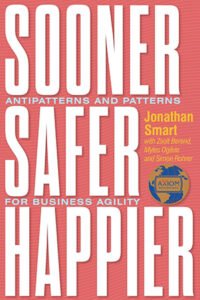|
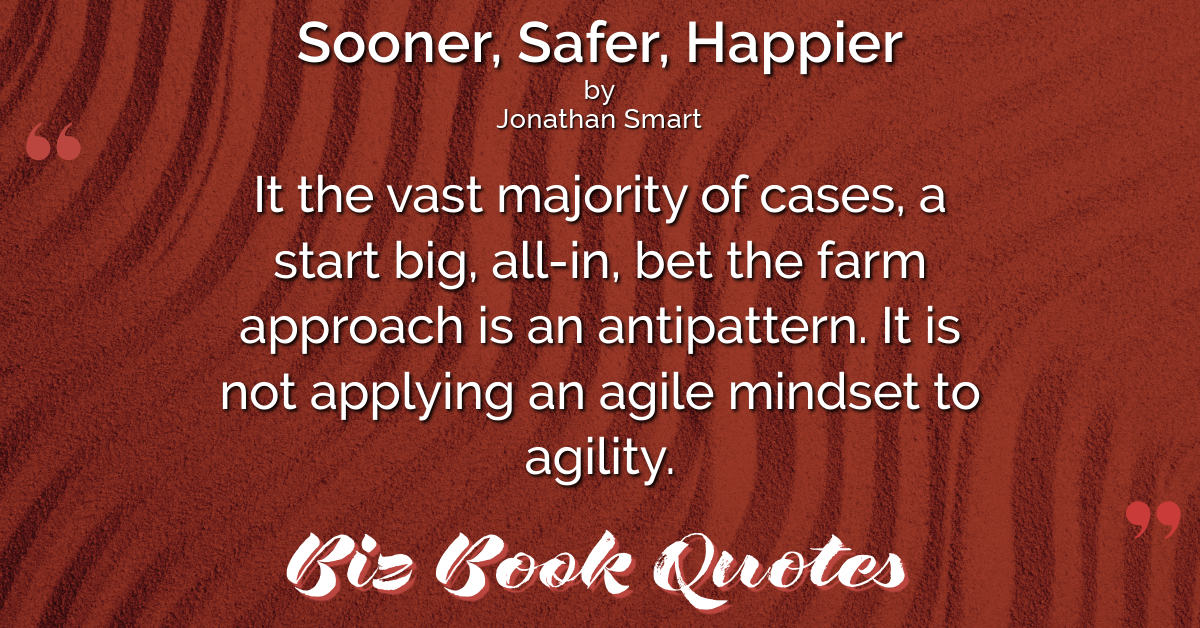
|
Sooner Safer Happier:
It the vast majority of cases, a start big, all-in, bet the farm approach is an antipattern. It is not applying an agile mindset to agility.
|
070 |
|
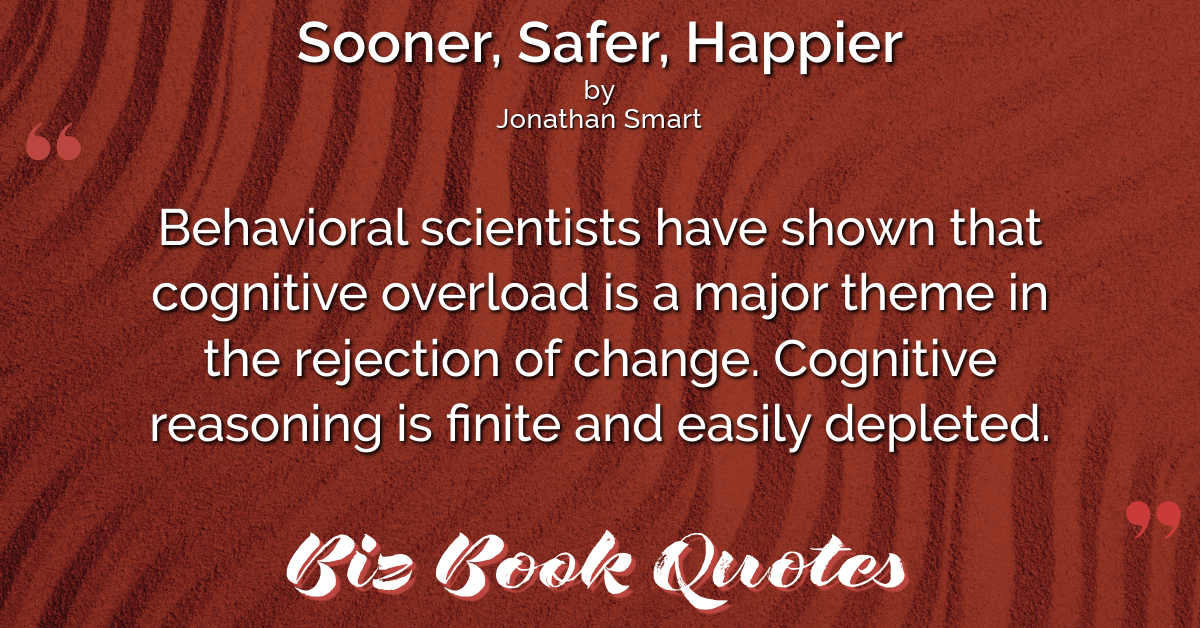
|
Sooner Safer Happier:
Behavioral scientists have shown that cognitive overload is a major theme in the rejection of change. Cognitive reasoning is finite and easily depleted.
|
072 |
|
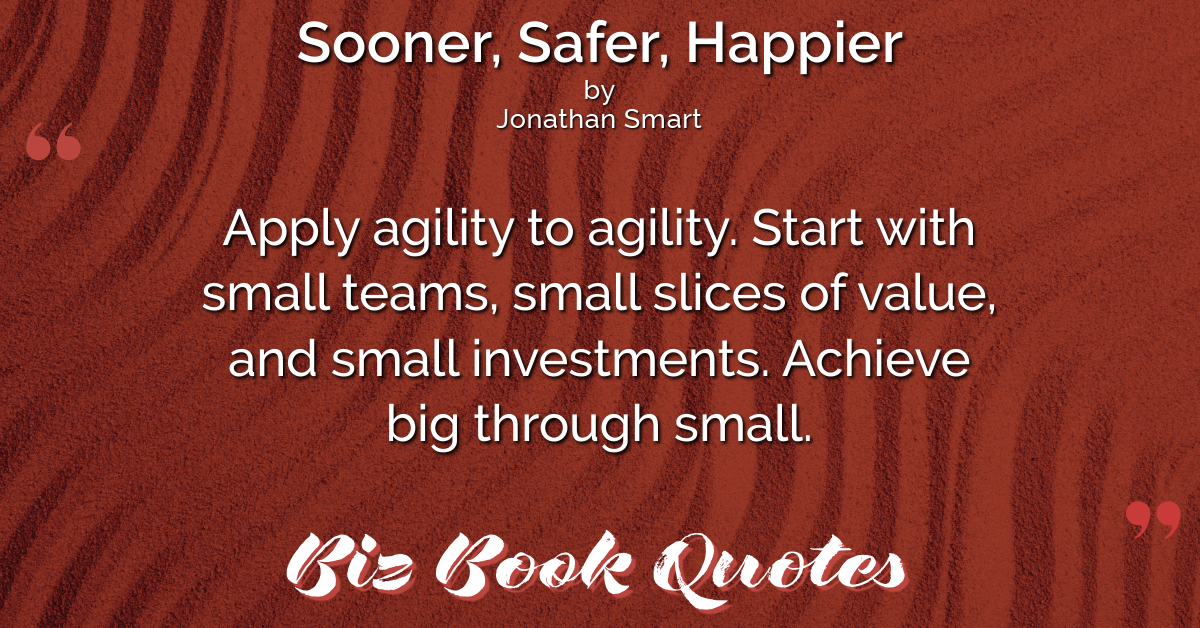
|
Sooner Safer Happier:
Apply agility to agility. Start with small teams, small slices of value, and small investments. Achieve big through small.
|
076 |
|
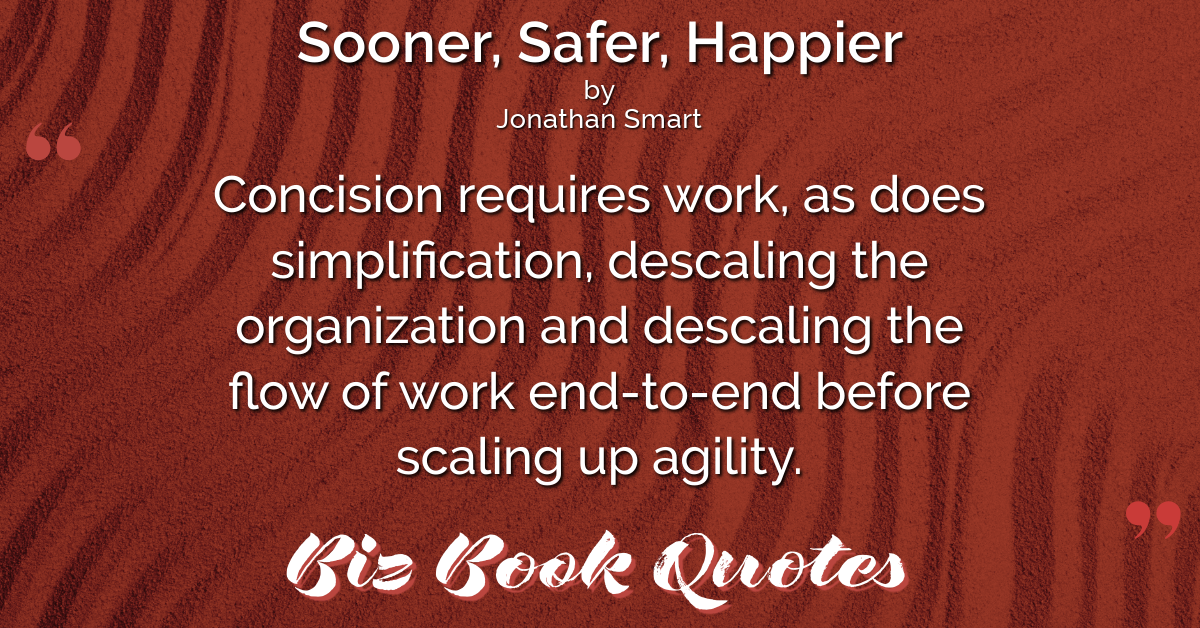
|
Sooner Safer Happier:
Concision requires work, as does simplification, descaling the organization and descaling the flow of work end-to-end before scaling up agility.
|
077 |
|

|
Sooner Safer Happier:
A willingness to fail fast and often results in learning sooner. There is no such thing as a failed experiment. There is learning.
|
079 |
|

|
Sooner Safer Happier:
Change in complex adaptive systems is messy… you can’t force the pace of change and you can’t predict it.
|
079 |
|
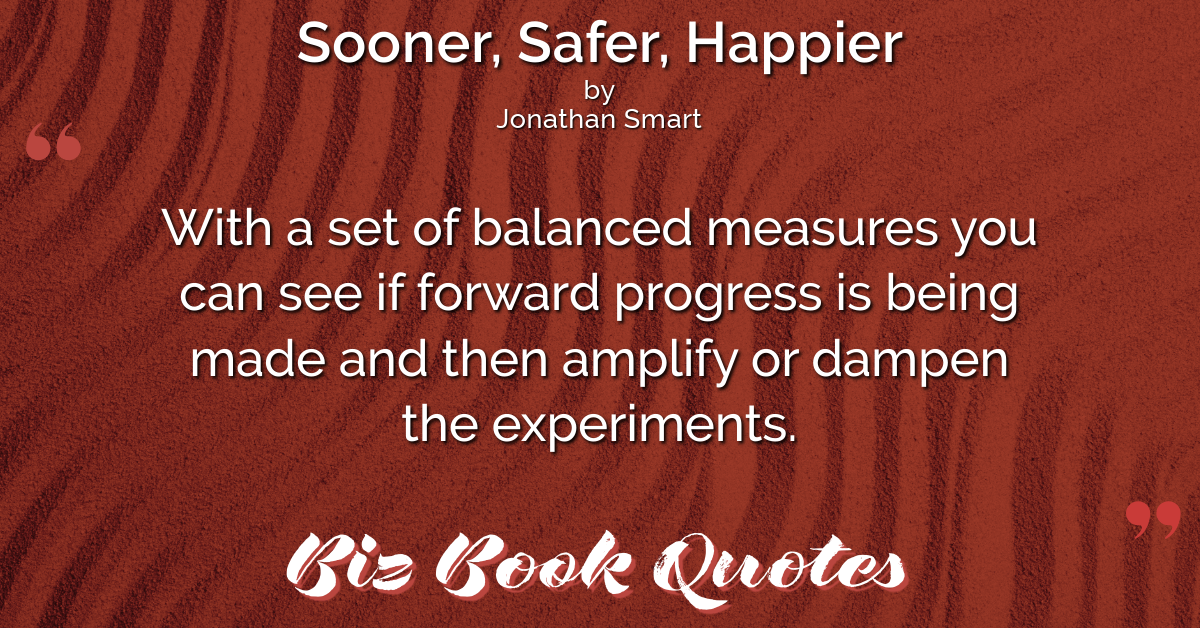
|
Sooner Safer Happier:
With a set of balanced measures you can see if forward progress is being made and then amplify or dampen the experiments.
|
079 |
|

|
Sooner Safer Happier:
…instead of trying to teach everyone at the same time… [ask] who wants to go first.
|
080 |
|
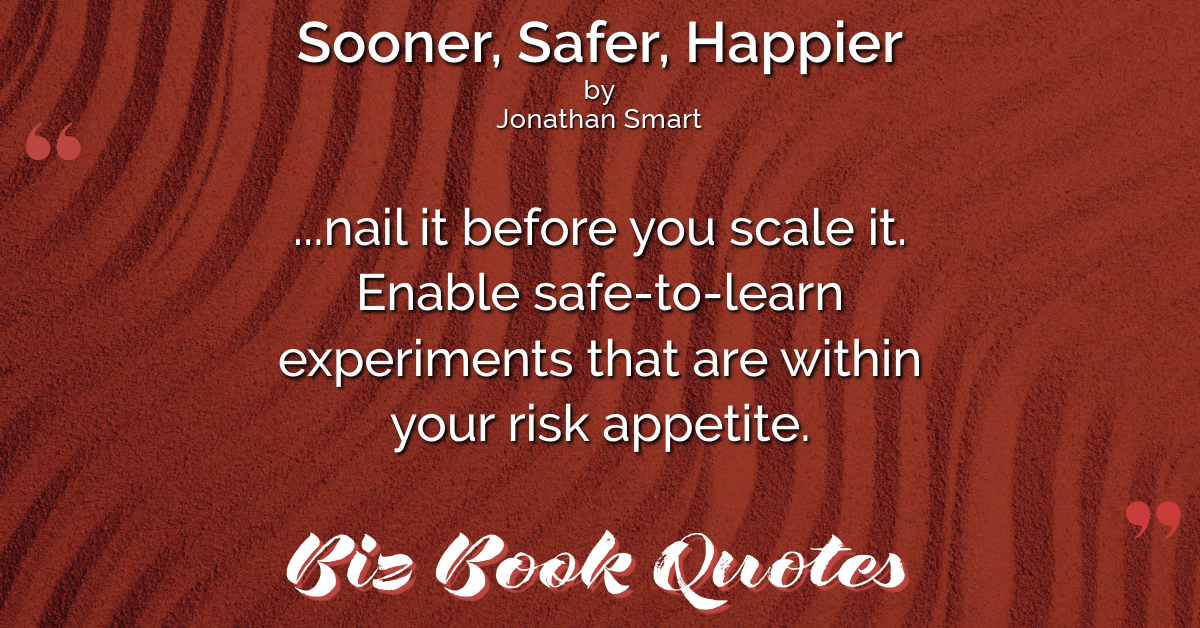
|
Sooner Safer Happier:
…nail it before you scale it. Enable safe-to-learn experiments that are within your risk appetite.
|
080 |
|

|
Sooner Safer Happier:
The pace of change cannot be predicted or forced; it’s a case of reading the tea leaves and nurturing it, giving it a tailwind…
|
083 |
